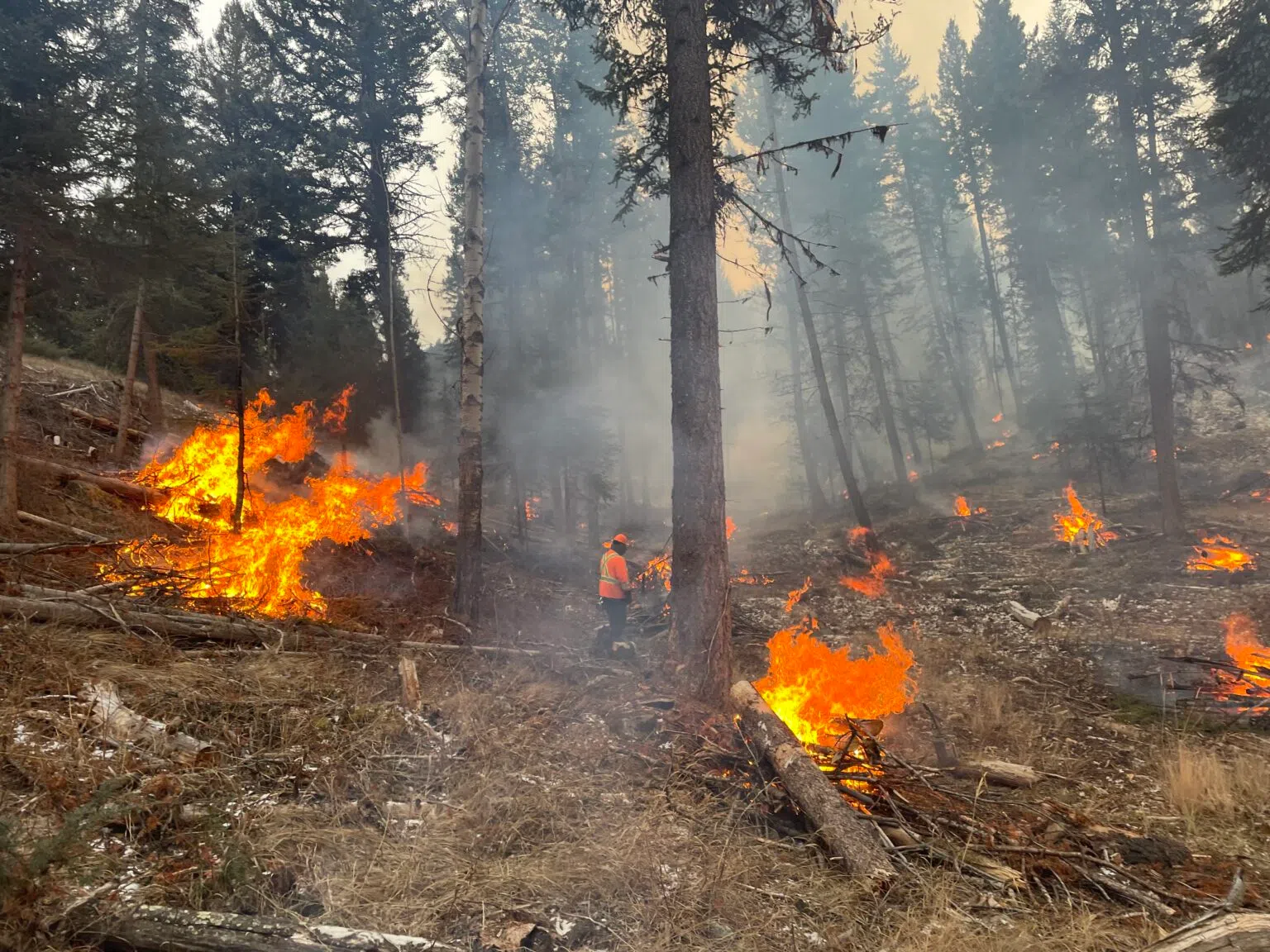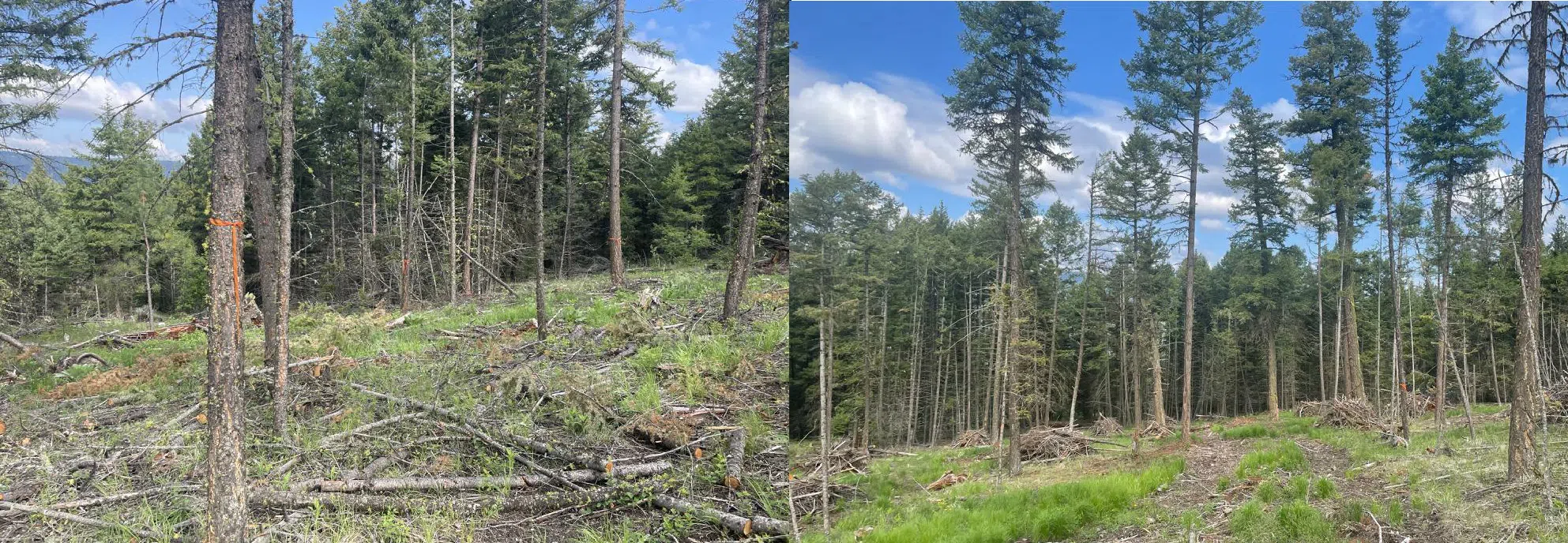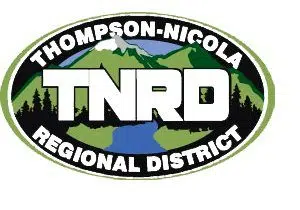
Shulus Forest Enterprises crews burning fuel debris piles in Steffens Estates area;
A wildfire risk reduction initiative led by the Lower Nicola Indian Band Development Corporation (LNIBDC) has significantly decreased wildfire hazards in the Steffens Estates area, just north of Merritt, while setting an example for Indigenous-led land stewardship in British Columbia.
The multi-phase project, which began in 2022 and was completed in March 2024, combined strategic timber harvesting with intensive fuel mitigation efforts to create safer forest conditions near the Steffens Estates subdivision—land bordering private residences and Crown forests. The effort was spearheaded by Shulus Forest Enterprises LP, the forestry arm of LNIBDC, in collaboration with Forsite Consultants Ltd. and supported by the Forest Enhancement Society of BC (FESBC).
“Some of the residents of the Steffens Estates area had personal ties to members of the Development Corporation and raised concerns about the built-up forest fuels around their community,” said Adam Sullivan, Senior Planning Forester with Forsite Consultants. “From there, the LNIBDC took the initiative to start a wildfire risk reduction project and applied for funding to carry it out.”
The project unfolded in three key phases:
-
Phase one saw the implementation of an industrial har
-
vesting permit, where crews removed up to 60% of mature timber to open up the forest canopy. This initial step, which did not require grant funding, kickstarted the risk reduction process.
-
Phase two involved applying for and receiving $544,425 in funding from FESBC. With those resources, LNIBDC crews returned to prune tree branches, remove ladder fuels, and burn woody debris. This dramatically reduced the remaining fuel load—material that can carry wildfire from the forest floor into the canopy.
-
Phase three, now underway with new FESBC funding, is expanding the treatment to an additional 80 hectares. This work, taking place through 2027, focuses on dense and hazardous forest
-
areas that lack commercially valuable timber but still pose a wildfire threat.
“These projects take multiple passes. Harvesting is just the beginning,” said Sullivan. “It’s the follow-up work—pruning, piling, burning—that really reduces the fire risk.”
Measuring the project’s success isn’t straightforward, Sullivan noted. “You hope to never have to test it, because that means there’s a fire. But if a fire does come through, these treated areas are meant to be safe and defensible space for fire suppression crews. They’re not a silver bullet, but they make a huge difference when suppression resources are in place.”
According to Sullivan, the treatments follow BC Wildfire Service standards and have been positively reviewed by officials from multiple provincial agencies. Still, their true effectiveness depends on conditions at the time of a fire—wind, heat, and available firefighting personnel.
Investing in Prevention and People
Beyond improving wildfire resilience, the initiative has generated valuable economic and employment opportunities for Indigenous workers in the Nicola Valley. Crews from LNIBDC were at the heart of the project’s execution, supported by technical assistance from Forsite.
“I really want to emphasize that this was LNIBDC’s vision from the start,” said Sullivan. “Our role at Forsite is to handle permits and funding, but the real work—the heavy lifting—was done by the crews. Their attitude, their skill, and their leadership deserve all the recognition.”
The project also respected critical environmental and cultural values, including Indigenous archaeological sites, wildlife habitat, and watercourses.
Looking Ahead
With more work planned near Steffens Estates and around critical communications infrastructure on Iron Mountain, the project is part of a broader effort to proactively manage wildfire risk in British Columbia.
“Supporting projects like this empowers local groups to build capacity and address long-standing deficits in forest management,” said Chris McGourlick, Operations Manager at FESBC. “This is what reconciliation and community resilience look like in practice.”
B.C. Minister of Forests Ravi Parmar also praised the initiative: “Wildfire risk reduction is one of the most important ways we can protect people, homes, and vital infrastructure – especially as our province faces the growing impacts of climate change.”
As Sullivan puts it, “These are the types of projects we need to be funding more of in B.C. They’re cost-effective, they create jobs, they protect people and forests. It’s prevention at its best.”
Watch the project video: https://www.youtube.com/watch?v=a9yzREdIJPU

Steffens Estates area before treatments; Steffens Estates area after treatments. Photo Credit: Tara Griener.















